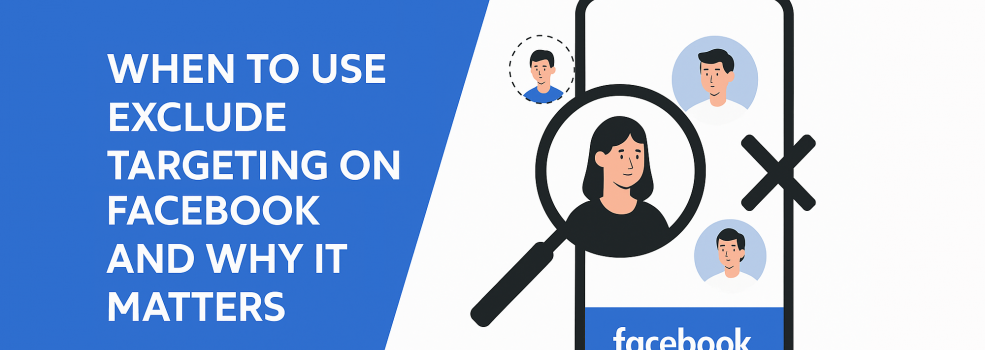What Is Exclude Targeting?
Exclude targeting on Facebook allows advertisers to deliberately prevent certain audiences from seeing their ads. While most campaigns focus on whom to include, understanding whom not to target can be just as important—especially when you're scaling campaigns, improving ROI, or refining message relevance.
Why It Matters
Using exclude targeting isn’t just about avoiding wasted impressions; it’s about creating smarter campaigns that yield better results.
Here’s why it matters:
Key benefits of using audience exclusion: higher ROI, reduced ad fatigue, and more precise audience segmentation.
According to Statista, over 10 million active advertisers use Facebook to reach audiences. With such competition, being able to exclude non-performing audiences offers a distinct advantage.
When to Use Exclude Targeting
1. Retargeting Campaigns
When running retargeting ads, exclude users who’ve already converted. This prevents you from wasting impressions and budget on people who’ve taken the desired action.
Use case: Exclude purchasers from your conversion campaign to focus on new prospects instead.
2. Lookalike Audience Overlap
If you’re running multiple lookalike audiences, there’s a strong chance of overlap. Use exclude targeting to separate them, ensuring each ad group operates with a clean slate.
Use case: Exclude 1% lookalikes from your broader 2–5% lookalike campaigns to avoid cannibalization.
3. B2B Campaigns Needing Specific Job Titles or Industries
Excluding unrelated job roles or industries helps refine your Facebook business audience for B2B ads.
Use case: Target marketing professionals, but exclude students and freelancers to maintain B2B relevance.
4. Testing New Offers or Messaging
To maintain clean A/B test results, exclude previous test audiences when launching new variants.
Use case: Testing a new landing page? Exclude audiences who have already seen earlier versions.
5. Geographic or Language Refinement
Exclude users from countries, cities, or language groups that underperform to keep your focus sharp.
Use case: Exclude low-ROI countries in global campaigns to boost performance in high-value regions.
Supporting Stats
Visual representation of key Facebook ad statistics: a 9.21% average conversion rate and the importance of audience targeting for 63% of marketers.
By refining your audience through exclude targeting, you align better with these performance-enhancing practices.
Final Thoughts
Exclude targeting is one of the most underutilized yet powerful tools in Facebook advertising. Whether you're optimizing conversions, improving relevance, or fine-tuning audience segments, exclusion ensures your budget works smarter, not harder.

